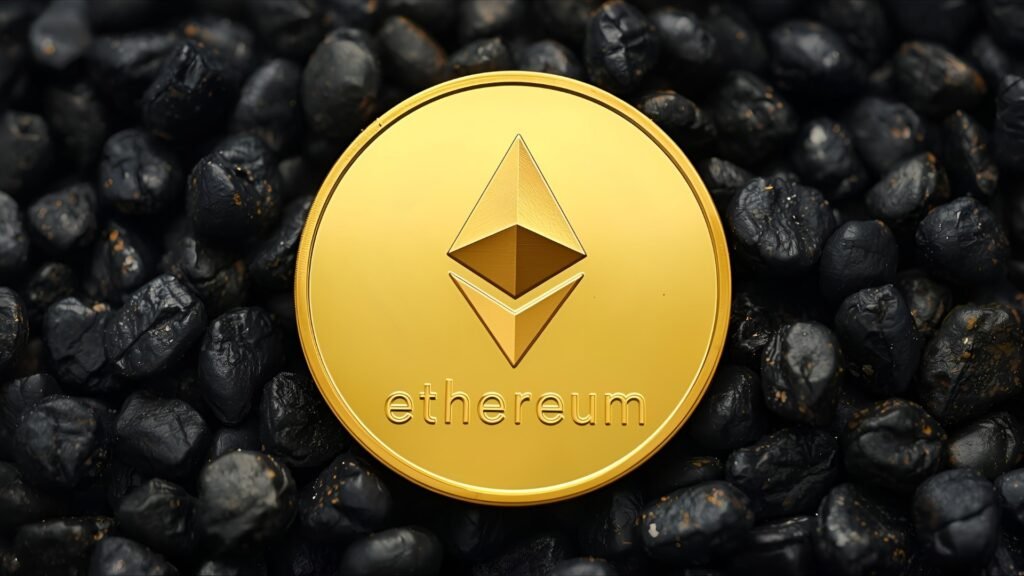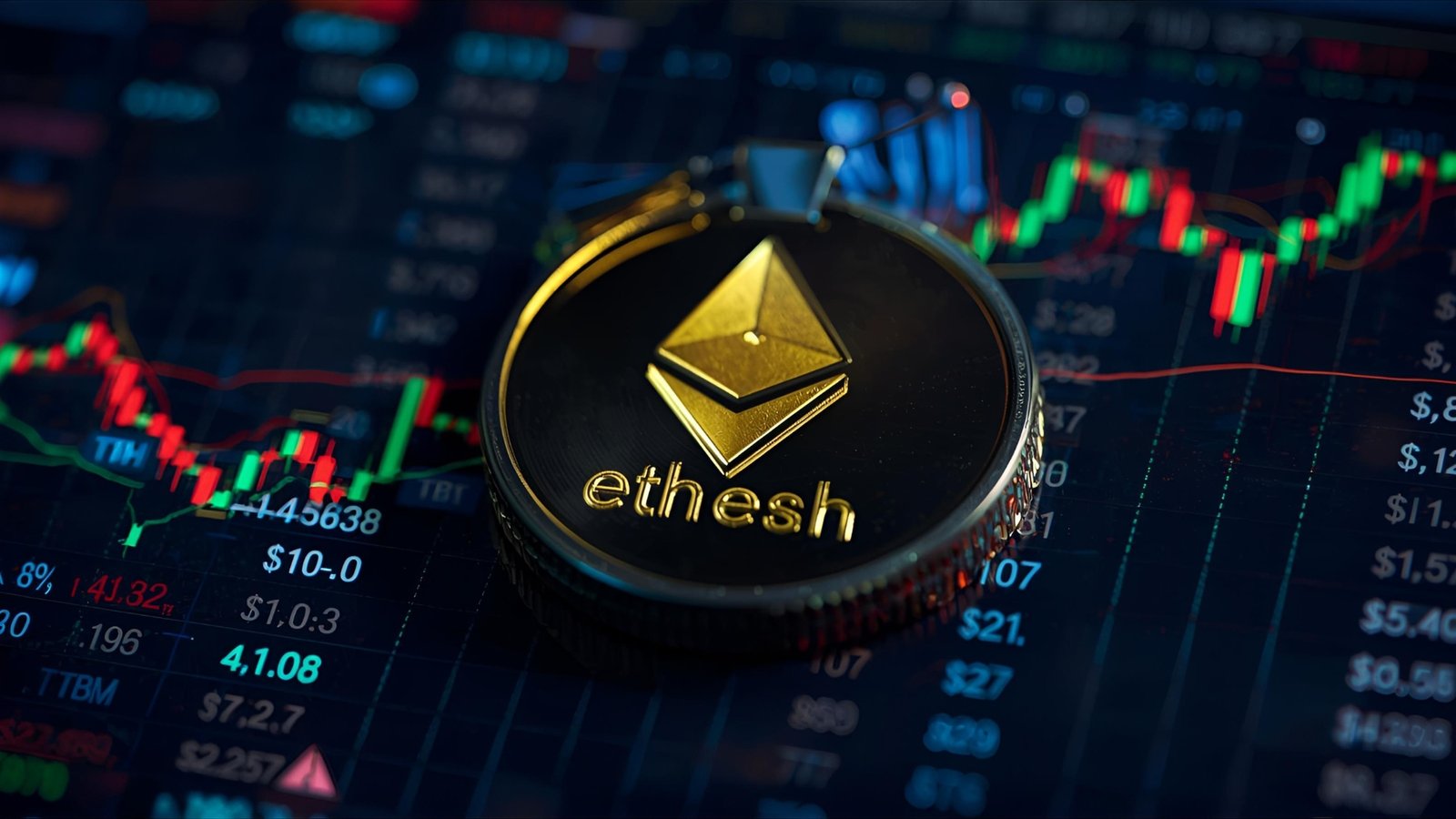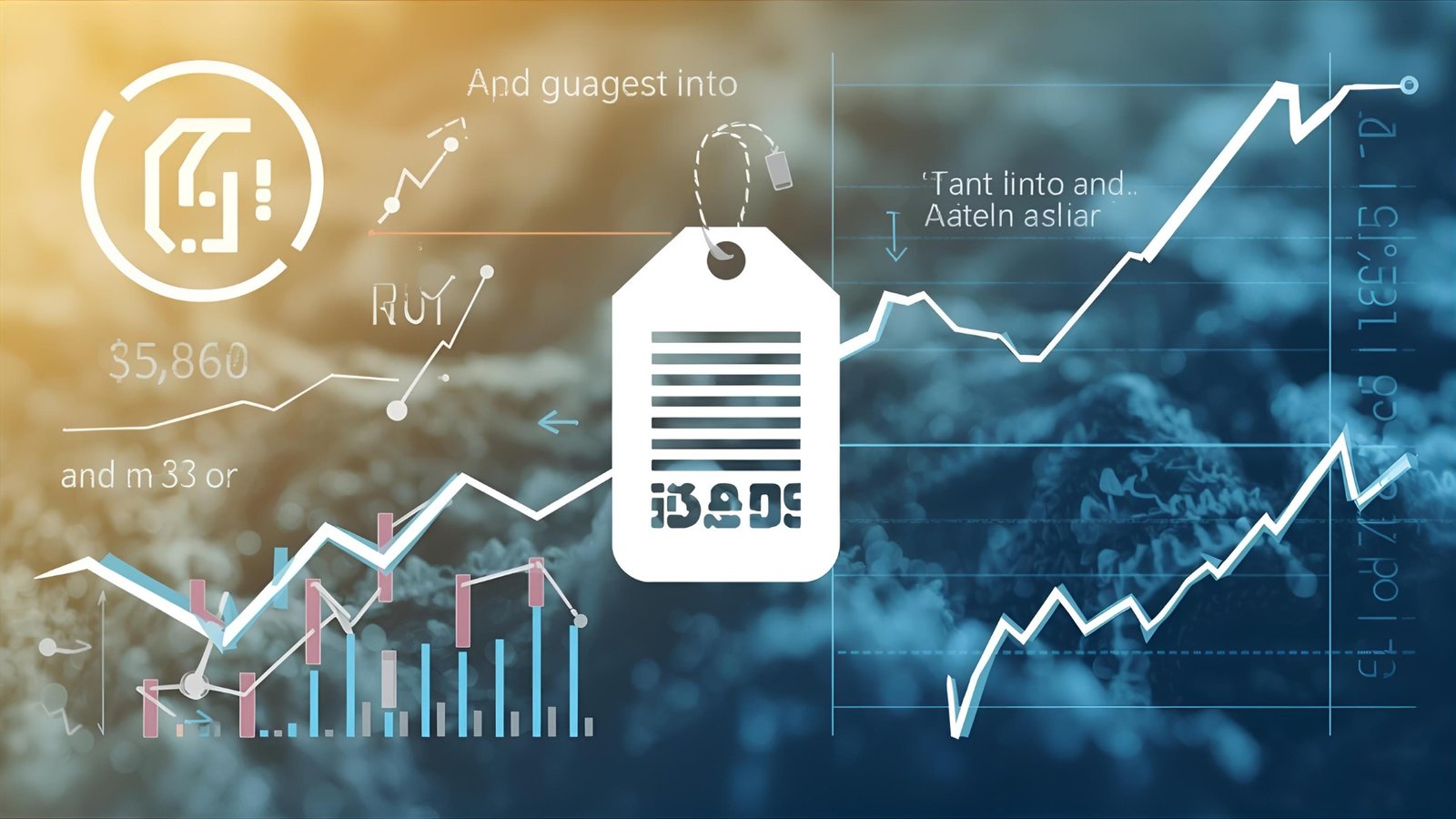Ethereum price has been circling the $3,880 area, a level that traders are watching as a springboard for the next directional move. While macro cross-currents remain tricky and broader crypto momentum has cooled from summer highs, a fresh narrative has arrived from Asia: a plan led by Huobi founder Li Lin to form a dedicated, $1 billion Ethereum treasury firm that would purchase and hold ether (ETH) on a long-term basis. For price action, the takeaway is straightforward—scaled, programmatic demand tends to compress available supply at the margin, particularly in a post-Merge, EIP-1559 era where issuance is structurally lean and base-fee burns offset inflation. Early reporting on the initiative has already nudged sentiment in ETH’s favor.
In this Ethereum price forecast, we’ll examine the near-term outlook for ETH-USD, the impact of the proposed Asia treasury on flows, how spot ETF dynamics, on-chain supply features, and Layer-2 scaling influence medium-term valuation, and the key technical levels to watch. The goal is to give traders and long-term allocators a balanced, human-readable roadmap while avoiding the over-optimization that often makes crypto analysis feel mechanical.
Why the $1B Asia Ethereum Treasury Story Matters
The headline is simple but powerful: a group of prominent Asian crypto backers is working toward a vehicle to accumulate up to $1 billion in ETH for long-term treasury purposes. Bloomberg reporting—summarized by outlets such as CoinDesk and others—highlights Li Lin’s Avenir Capital as a driving force, with participation from early Ethereum supporters in the region. The venture would operate independently of Huobi, and the mandate is laser-focused: buy and hold ETH. If finalized, the initiative represents a new, steady buyer in the market—more akin to a corporate or sovereign treasury than a speculative fund, which is precisely why traders have reacted.
For context, crypto assets are acutely sensitive to persistent flow changes. One reason spot Bitcoin found a durable floor in past cycles was the arrival of new “structural” buy-side programs—first corporate treasuries, then ETFs. Ethereum is now seeing early versions of that dynamic. Combine a dedicated Asia-based ETH treasury with improving ETF flows and the supply effects of EIP-1559 burns and proof-of-stake issuance, and you get a supportive medium-term backdrop—even if the tape, day-to-day, remains choppy.
Current Market Snapshot: ETH Holds the Line Around $3,880
As of today, ETH trades near $3,900, with intraday ranges oscillating around the $3,880 handle. That’s a psychologically important reference area and a pivot around which liquidity has clustered. In practical terms, the market is asking whether recent news-driven demand and continued ETF interest are sufficient to push ETH back toward the $4k–$4.2k band where supply has repeatedly pushed back. (Live pricing above.)
On the flows side, U.S. spot Ethereum ETFs have periodically printed strong net inflows since launch, including a day above $1 billion in net creations—evidence that institutional pipes are active when macro and crypto-specific narratives align. While daily prints vary, the presence of the ETF wrapper gives allocators a familiar, regulated channel to express ETH exposure, and that matters in year-end positioning windows.
On-Chain Structure: Why Supply Mechanics Help Dips Get Bought
One of the most under-appreciated aspects of the modern Ethereum is its supply and fee design. Since EIP-1559, part of every transaction’s base fee is burned, permanently removing ETH from circulation; after the Merge, ETH issuance dropped as the network shifted to proof-of-stake (PoS). These two forces have, at times, pushed net supply growth to flat or negative when on-chain activity is hot. For price forecasting, that means incremental demand—whether from ETFs, treasuries, or builders—translates more cleanly into price than in prior eras.
Add in the Dencun upgrade (the Cancun-Deneb hard fork), which activated EIP-4844 (proto-danksharding) to introduce lower-cost blob data for rollups. That change cuts L2 data availability costs and, by extension, supports cheaper transactions on Layer-2s. Lower friction generally expands the addressable user base, boosting the network’s economic throughput over time. The scaling roadmap matters to valuation because it increases the likelihood that usage growth sustains the fee burn engine—even during slower macro periods.
Technical Landscape: Levels That Define the Next Swing
Short-term technicians are focused on three zones:
The $3,750–$3,800 Support Shelf
Repeated intraday tests have carved out a support band where responsive bids emerge. A decisive break below would likely invite a flush toward the rising 100-day moving area (exact prints vary by venue), but so long as this shelf holds, dip-buyers retain the initiative.
The $3,880 Pivot
This is today’s battleground. Hold above on a daily closing basis, and the bias tilts upward; fail, and we remain stuck in a congestion regime. The pivot is especially potent right no,w given headlines and positioning into the weekend.
The $4,050–$4,200 Supply Box
Multiple rejections in this range mark it as a supply overhang. A clean break and hold above unlocks a path toward retests of cycle highs, but expect heavy two-way trade as early longs take profits and late shorts cover.
From an ETH-USD forecast standpoint, a base-building sequence above the pivot, followed by higher lows on pullbacks, would support an eventual breakout—especially if ETF inflows re-accelerate or the $1B Asia treasury clarifies its timeline and structure.
Macro & Liquidity: The Winds You Can’t Ignore
Crypto is not an island. Dollar liquidity, U.S. Treasury yields, and global risk appetite still set the stage. When real yields surge and the dollar rallies, crypto risk premiums expand, slowing trend continuation. Conversely, calming rates and benign inflation prints tend to invite multi-week pushes higher in beta-assets, including Ethereum. This is where structural demand (ETFs, treasuries, staking) can tip the scales—by smoothing drawdowns and turning shallow dips into consolidation rather than breakdowns.
The Asia treasury story also speaks to geographic diversification of demand. Regional buyers can become the marginal price setter during their trading hours. If a regulated, Asia-domiciled vehicle starts accumulating ETH methodically, it could tighten the overnight range, reduce downside volatility, and anchor price around higher equilibrium levels—effects traders already observed in Bitcoin during the North American ETF ramp.
L2 Adoption, Fees, and the Usage Flywheel
A core piece of the Ethereum price prediction puzzle is whether activity keeps expanding. After EIP-4844, rollups gained access to lower-cost data blobs, which reduces L2 fees and paves the way for application classes that were previously impractical: real-time micro-payments, high-frequency gaming interactions, and enterprise-grade settlement flows. Lower L2 fees feed a usage flywheel: more users → more transactions → more total fees at the network level (even if average per-tx fee falls) → more base-fee burn → tighter supply—without compromising Ethereum’s security model. Over time, that’s how fundamentals and tokenomics connect to the chart.
ETF Flows and Treasury Demand: Complementary, Not Redundant
It’s tempting to treat ETF net inflows and a proposed $1B Asia treasury as duplicative demand sources, but they operate on different cadences. ETF flows are reactive—they pulse with macro data, earnings, or narratives. A treasury vehicle is programmatic—it accumulates per policy, often regardless of headline noise. Together, they diversify demand, which makes the order book deeper and the tape less whippy. That diversification is particularly important as Ethereum’s staking ecosystem matures and yield opportunities compete for capital.
Notably, the ETF wrapper also minimizes friction for institutions that cannot hold native assets. When the tape turns constructive, ETF creations can spike quickly—like the $1B+ single-day net inflow we’ve already seen since launch—adding a momentum layer on top of structural treasury purchases.
Scenario Mapping: Base, Bull, and Risk Cases
Base Case (High Probability)
ETH oscillates around $3,800–$4,100 while the market digests macro prints and waits for clarity on the Asia treasury’s structure and start date. L2 usage trends remain constructive post-EIP-4844, ETFs keep net inflows positive on a rolling basis, and dips into the mid-$3,700s find buyers. In this base path, $4,200 is tested but not cleanly held until stronger catalysts arrive.
Bull Case (Catalyst-Driven)
The Asia ETH treasury launches with clear timelines and steady allocation schedules, ETF creations accelerate into quarter-end, and gas-sensitive L2 applications post visible user growth. The market pushes through $4,200, re-rates toward prior cycle highs, and consolidates above the breakout as traders chase performance and ETH-USD begins to reflect the combination of deflation-leaning supply and scaled demand.
Risk Case (Vol Fragility)
A surprise macro shock (hot inflation, rapid yield spike, or credit event) tightens liquidity and triggers outflows across risk assets. ETF flows stall or flip negative temporarily, and the Asia treasury timeline slips, sapping momentum. ETH loses $3,750, runs stops toward the 100-day reference, and requires a fresh fundamental spark (e.g., an on-chain growth spurt) to rebuild. Crypto is still beta-sensitive; that hasn’t changed.
What to Watch Next (and Why It Matters)
Formalization of the Asia Treasury
Look for jurisdiction, structure, and custody details, plus cadence of purchases. A transparent, rules-based allocation plan would be especially constructive because it lets market makers model expected flow. Early reporting suggests independence from centralized exchanges and a focus on ETH accumulation rather than trading—a positive signal for long-term supply absorption.
ETF Creation/Redemption Trends
Track rolling weekly net inflows. Big positive days don’t need to persist; what matters is that the 4- to 8-week moving sums stay net positive. That pattern keeps the creation pipe primed and conditions the market to buy dips confidently during macro wobbles.
L2 Cost Curves Post-4844
Monitor whether blob pricing and L2 fees continue trending lower, and whether throughput (transactions per day on major rollups) climbs accordingly. Sustained improvements strengthen the fundamental side of the ETH story and justify rerating multiples for the broader Ethereum economy.
Valuation Framing: How Do You “Value” ETH?
Valuing Ethereum mixes cash-flow analogies with network effects. While ETH doesn’t have traditional earnings, it captures value through required gas payments, staking yield, and collateral utility. Think of the base-fee burn as a buyback-like mechanism: network activity funds token reduction. Meanwhile, staking offers a real yield in ETH terms, strengthening long-term holding incentives. If you combine these with pipeline catalysts (ETF flows, treasuries, L2 adoption), the result is a credible path to multiple expansion—not in a P/E sense, but in how the market prices the scarcity and utility of ETH.
Bottom Line: Why $3,880 Is More Than a Price Tag
Today’s $3,880 isn’t just another tick. It’s a litmus test for where we are in Ethereum’s transition from tradable narrative to institutionalized asset. The proposed $1B Asia treasury adds a new, patient buyer; ETF plumbing provides scalable access; supply mechanics keep issuance lean; and L2 scaling upgrades reduce friction so usage can compound. Those pillars don’t guarantee a straight line upward—nothing in markets does—but they make pullbacks more orderly and breakouts more sustainable. For traders, that argues for respecting support while it holds; for allocators, it supports gradual accumulation on weakness with an eye to structural demand.
Conclusion
ETH-USD is steady around $3,880 as the market digests a potentially important structural catalyst: a $1B Asia-based Ethereum treasury that aims to buy and hold ETH over the long term. Pair that with improving ETF infrastructure, post-Merge supply dynamics (burn + lean issuance), and L2-driven scalability via EIP-4844, and you get a constructive medium-term setup—even if the near-term chart remains range-bound. Our view: as long as the $3,750–$3,800 support shelf defends and the Asia treasury formalizes clear purchase cadences, Ethereum’s path of least resistance trends upward toward retests of the $4,050–$4,200 region, with a durable breakout contingent on flow confirmation and friendly macro.
FAQs
Q: What exactly is the “$1B Asia Ethereum treasury,” and how could it affect price?
Early reports indicate a Li Lin–led vehicle, independent of Huobi, that would accumulate up to $1 billion of ETH for treasury purposes with backing from prominent Asian crypto investors. If the plan proceeds, steady, programmatic buying could tighten spot liquidity, support dips, and help ETH sustain breakouts as supply growth remains modest under the current fee-burning and PoS regime.
Q: How important are spot Ethereum ETFs to the ETH-USD outlook?
They’re a key distribution channel for institutions that can’t hold native tokens. Even if daily flows are lumpy, periods of strong net creations—including a $1B+ single-day net inflow—show that capital can move quickly into ETH when narratives line up. Over time, consistent net inflows form a supportive demand floor beneath the price.
Q: What role do EIP-1559 and the burn play in Ethereum’s valuation?
EIP-1559 burns the base fee on each transaction, permanently removing a portion of ETH from supply. Post-Merge, issuance dropped under proof-of-stake, so periods of high network activity can push net supply growth toward zero or negative. That structure amplifies the effect of new demand (ETFs, treasuries, on-chain usage) on price.
Q: How does EIP-4844 (proto-danksharding) influence ETH’s long-term potential?
EIP-4844, activated in the Dencun upgrade, added blob data for rollups, lowering L2 costs and opening the door to higher-throughput applications. Cheaper L2s can grow total activity, which feeds fee burn and utilization—two pillars that support long-term ETH value capture.
Q: What are the main risks to this Ethereum price forecast?
The biggest are macro shocks (higher real yields, stronger dollar, risk-off), execution risk around the Asia treasury (delays or downsizing), and ETF flow reversals during market stress. Any of these could push ETH below $3,750, forcing a deeper reset before trend resumption. Still, the longer-term demand+supply structure remains favorable if the core theses—ETFs, treasuries, L2 adoption—hold.



